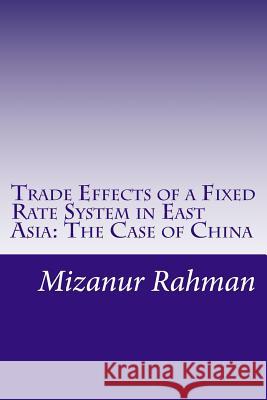Trade Effects of a Fixed Rate System in East Asia: The Case of China » książka
Trade Effects of a Fixed Rate System in East Asia: The Case of China
ISBN-13: 9781514831359 / Angielski / Miękka / 2015 / 78 str.
Global trade imbalance against China as well as East Asia is an outcome of 'globally integrated business strategy of multinational corporations, ' which has led to the development of production networks in East Asia. As an outcome, economic interdependency in East Asia has grown even stronger in relation to its rapid economic growth. It has also been associated with increasing factor mobility and business cycle synchronization across countries within the region. This led me to conjecture that East Asia was an optimum currency area. Nevertheless, the countries have independent national currencies and conduct heterogeneous exchange rate and monetary policies. This provides the setting for this research.
This monograph empirically examines if the actual policy environment relative to the optimal choice, in presence of an external shock, can significantly affect East Asian production networks and thereby the pattern of regional trade integration. While the actual policy environment is characterized by heterogeneous exchange rate regimes of East Asian countries, the optimal choice is assumed to be a currency area arrangement whereby the countries either share a single currency or have their exchange rates fixed to one another. It is thereby an ex ante analysis of a potential institutional arrangement. The conceptual framework and empirical methodologies are designed in order to draw valid inference on both the short-run dynamics and the long-run equilibrium relations between exchange rates and exports. It has been applied in the context of China, where final stages of assembly and exporting have become increasingly concentrated. In doing that, the study uses a unique Chinese trade dataset that distinguishes exports that are produced along the production networks from those that are not.
Zawartość książki może nie spełniać oczekiwań – reklamacje nie obejmują treści, która mogła nie być redakcyjnie ani merytorycznie opracowana.











